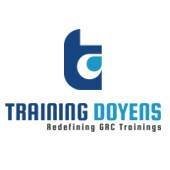Writing Effective Audit Observations
OVERVIEW
The key to writing an effective audit observation is having a comprehensive structured process. The Institute of Internal Auditors recommends a process known as the 5Cs:
- Criteria
- Condition
- Cause
- Consequences (Effect)
- Corrective Action (Recommendation)
As you develop conclusions, findings, and recommendations, you must present them to your client in a logical, complete, and objective way. This process provides an easy way to consistently develop and present your observations. The components in this process include all the information you will need to inform and persuade.
Developing this process can be an important tool for completing and reporting observations in a timely and comprehensive way. It allows you to present those findings to your reader in a logical, complete, and objective manner and, thus, enhances the chances of the client’s buy-in and their agreement to your recommendations.
This process can also serve as a basis for review by supervisors and managers. It is supported by your work papers, and gives complete and clear details of your analysis and the basis for your findings.
WHY SHOULD YOU ATTEND
The audit observation is the most important part of an audit report. It represents the end result of weeks of reviews, analyses, interviews and discussions. It is used to bring significant issues to their attention that needs to be addressed. How well you communicate that information is critical to influencing the readers and getting the results you are seeking. A well written audit observation will capture the readers’ attention and focus them on the important issues in the report that needs to be addressed. A well written audit observation adds value to your clients by providing:
- Concise, understandable, and persuasive observations
- Actionable recommendations
AREAS COVERED
Review of the following recommended observation standards in detail:
- Criteria (Standard used for comparison of area under review)
- Condition (Current status used in the comparison)
- Cause (Reason that the Condition does not meet the Criteria)
- Consequence (Risk if not corrected)
- Corrective Actions (Action needed to manage the risk)
Exercises for each component
WHO WILL BENEFIT
- Chief Audit Executives
- Audit Directors
- Audit Supervisors
- Audit Managers
- Staff Auditors
- Government Auditors
- Compliance Auditors
- Internal Control Specialists
- Public Accountants
- Accounting Analysts
- Business Analysts
- Quality Control Specialists
LEARNING OBJECTIVES
This internal auditor training will provide the basic principles for writing effective audit observations. The audit observations represent the end result of weeks of reviews, analyses, interviews and discussions. It is used to provide important information to management on the area you reviewed. And, more importantly, it provides details to management on significant issues that needs to be addressed. How well you communicate that information is critical to getting management’s acceptance of your findings and their agreement with your recommendations. And ultimately, this demonstrates the value you add to the company and enhances your chances for promotions and greater salary increases.
Email: [email protected]
Toll Free: +1-888-300-8494
Tel: +1-720-996-1616
Fax: +1-888-909-1882
Speaker and Presenter Information
Jonnie Keith has been in auditing for over 40 years. He retired in 2012 as the assistant general manager (AGM) of internal audit with the Metropolitan Atlanta Rapid Transit Authority (MARTA) in Atlanta, GA. He served in that capacity for over 10 years and was responsible for administering their overall audit activities. He was also responsible for the review and approval of all internal audit correspondence including audit reports, executive summaries, internal and external correspondence, etc.
Relevant Government Agencies
Dept of Commerce
Event Type
Webcast
This event has no exhibitor/sponsor opportunities
When
Thu, Oct 26, 2017, 1:00pm - 2:30pm
ET
Cost
| Live Webinar: | $199.00 |
| Recorded Webinar: | $219.00 |
Website
Click here to visit event website
Event Sponsors
Exhibitors
Organizer
Training Doyens





